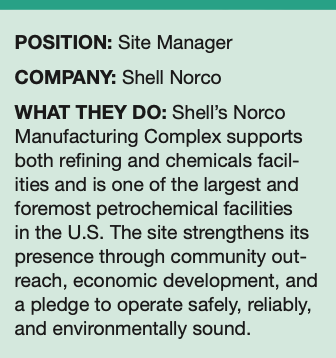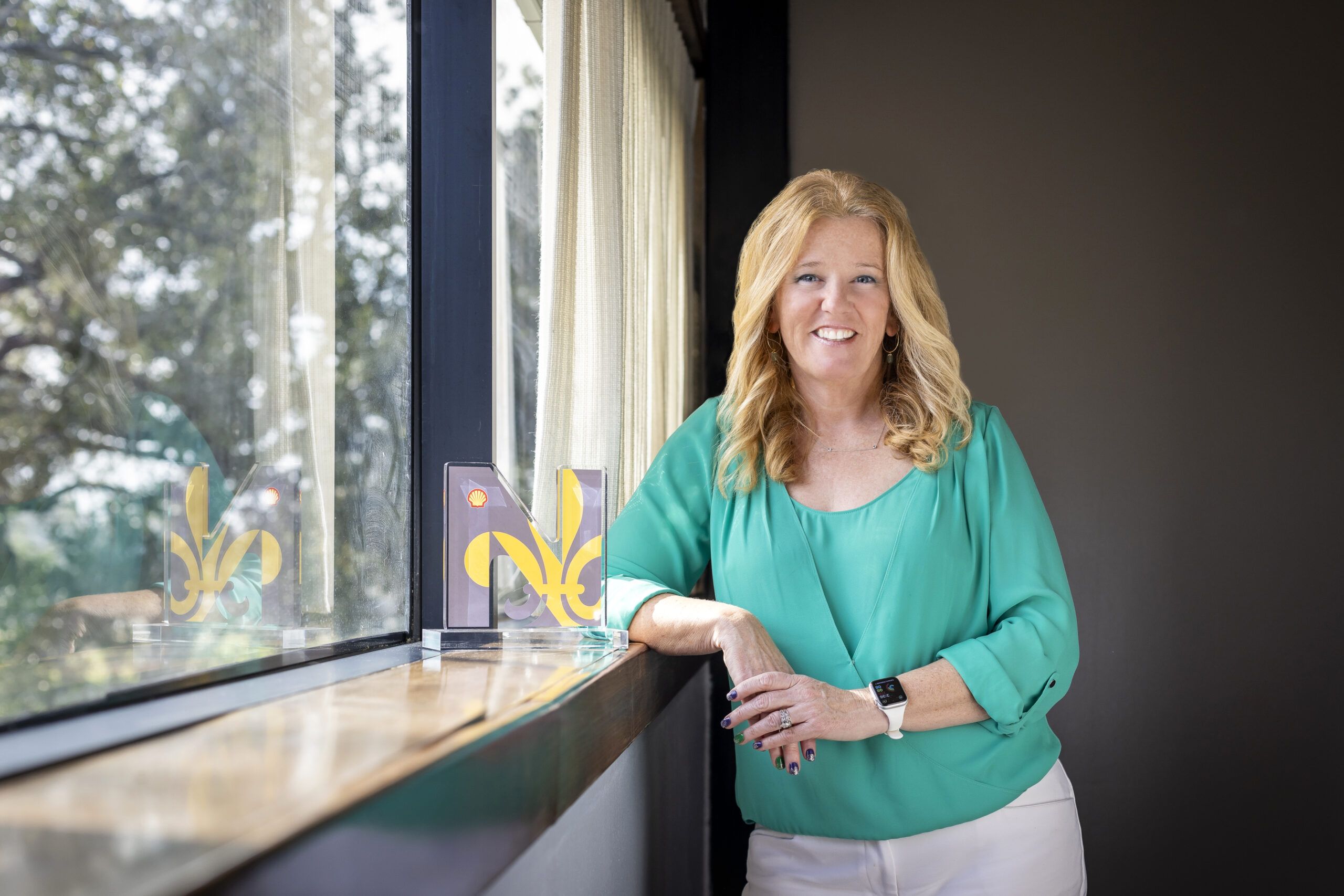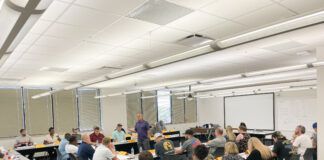
Tammy Little served several stints at Shell Norco and other facilities before assuming the plant manager’s role. Her leadership skills began taking shape while serving as an engineer in the olefins plant, where she developed and executed ideas to ensure plant operations ran more smoothly. At another facility, she innovatively tackled and developed solutions for a variety of operational challenges.
Through those and other experiences, she came to an epiphany. “It taught me to serve those who were counting on me and to do the best that I could,” Little says. “I learned to have faith and trust that it would ultimately pay dividends.”
This brand of “servant leadership” is particularly important now that she’s back at Norco in a decidedly more significant role.
The Challenge
During the 2008-2009 economic downturn, it became starkly apparent that Shell Norco’s technology and operational approach to the chemicals side of its business were flawed. Put simply, Shell Norco needed to make changes to its feedstock and operational “kit” to remain competitive.
There were also emerging reliability challenges. “It was a double whammy,” says Tammy Little, who served as interim production manager at the time. “We were beginning to wonder if we could make money as a business because of these fundamental flaws and the way we were set up. We had to figure out how to use the same asset and adjust it so that we weren’t dependent on those feedstocks.”
It was unclear if the changes could be made fast enough to turn the business around. It was a scary time. “We needed to take drastic steps,” Little says. “We needed to shut down one of our big olefins crackers because we were losing money every day. Both our operations and technical communities were working behind the scenes to put changes in place to improve the fundamental setup of our kit and improve our reliability.”
The Resolution
Little and her team opted to perform the capital improvements project simultaneously with a scheduled turnaround in the olefins cracker. It would take an unprecedented nine months. “It was a ridiculous amount of time to have an asset down, but we were going to save money by executing the work,” she says. “We would then restart it with a fundamentally different kit.”
The leadership team formulated the strategy, as well as identified the necessary capital work, process improvements and behavioral changes that needed to occur. They also worked to ensure that employees understood the change in strategy and the role each would play.
And it all needed to be done in a hurry. “Our motto was FINAO (Failure is Not an Option), and we even made T-shirts,” Little says. “After all, if we had failed, we all would have lost our jobs. When you shut down an entire business like this, you don’t just bounce back.”
In the end, the team successfully implemented reliability focused improvements and created better alignment along the organization.
“We turned it on a dime,” she adds. “It became a much more reliable and profitable business.”
The Takeaway
Little learned several lessons along the way. Most importantly, perhaps, the crisis helped shape her as a servant leader. “There were moments when it was unclear if we could do it,” Little says. “I would be on the Causeway Bridge driving from my home on the Northshore and I would just break down in tears. I just felt so much responsibility.”
It became a pivotal moment. “It was then that I realized that a leader’s role is to enable the success of their workers, instead of them working to enable my success,” she adds. “It’s a subtle but important distinction. I realized that I had to let that go. It wasn’t about me; it was about them. They were counting on me and I couldn’t let them down.”
She also learned that being a leader requires a long-term view. “A leader should look at the functionality of today’s operations, but also what’s coming down the road. You need to know how to steer the ship proactively so that you’re not creating a future crisis.”
Embracing a “learner’s mindset” is also critically important. “No one bats a thousand,” she says. “There are going to be times when you have to learn from a setback and learn from your journey.”









